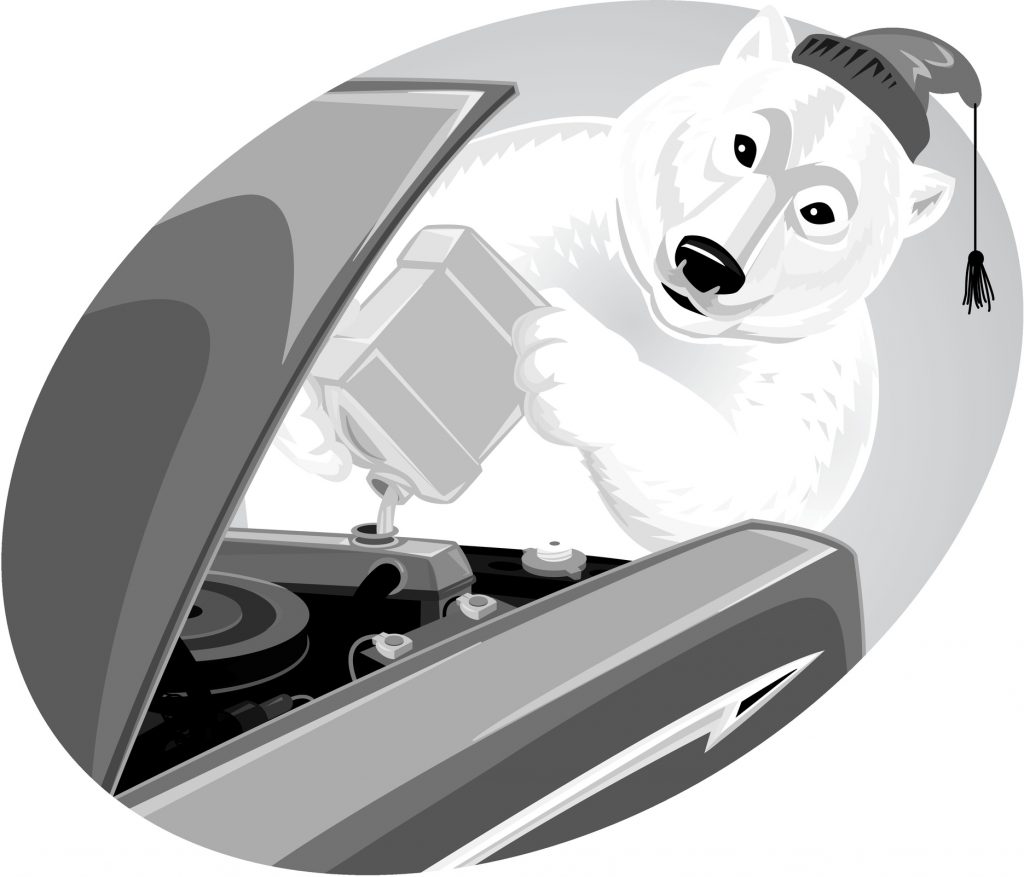Before the advent of front-wheel drive, it was an arduous process prepping your vehicle for the winter driving season, one that typically involved wrapping steel chains around your tires to ensure that they would be able to grip snow and slush covered roads.

Luckily, those days are long gone. Today’s modern cars don’t require as much maintenance and are easier to get started – and drive – during the winter months.
However, despite advances in automotive engineering, it’s still important to do a proper inspection of your vehicle before temperatures drop so your chances of getting stranded on the road this winter are minimal.
Keep it Charged
There’s never a good time for your vehicle to have trouble starting. But if you had to pick, wouldn’t it be better to have this problem in the summer instead of winter?
Unfortunately, your car battery is likely to give you fits during the winter because it tends to lose power when the temperature dips below freezing.
To combat this, though, have your battery tested sooner rather than later. A mechanic can run a battery load test on it to determine its remaining voltage. In other words, the test will let you know if it needs replaced or if a simple charge/tightening of loose terminals will do the trick.
Cooling System is the Most Important System
On the surface, antifreeze might not seem that vital to the well-being of your vehicle. But if you don’t have the proper amount and mixture in your radiator this winter, then you could be in for a rude awakening if your engine block becomes damaged.
Since water is the most effective coolant, it’s important to have the proper mixture of water and antifreeze in your radiator, which in most cases is a 50:50 mix.
However, for colder climates – specifically those that are routinely below 0°F – you’ll have to add more antifreeze to adjust the mix accordingly.
Consult your vehicle’s owner’s manual, though, before adding antifreeze since each manufacturer and brand has different recommendations.
Or if you simply want to measure the freezing point of your existing antifreeze, pick up an antifreeze tester at any local auto parts store for less than $5.
Choose Your Tread Wisely
Depending on how much snow your region regularly receives, it can be wise to swap out your all-season radials for a set of snow tires so you have better traction.
Snow tires, which have larger and wider tread patterns than regular tires, are resistant to slippage and can retain their flexibility in colder temperatures.

If you opt for snow tires, though, make sure that you use four, and not just two on the area your drivetrain is located. For instance, if there are only snow tires on the front of a front-wheel drive car – and not the back – then there is the potential that the vehicle’s rear could slip out from under it.
For the best traction possible, consider using studded tires – which are steel pins embedded into the tread of a tire. However, keep in mind that different states have different regulations regarding their use. Pennsylvania, for instance, only permits studded tires from November to April.
For more car maintenance tips, or to have your snow tires installed on your vehicle in time for Old Man Winter, call Andy’s Auto Service at 412-478-9304 to schedule an appointment.